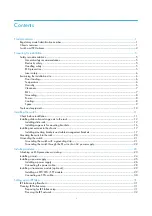
Hypervisors
VLAN usage under KVM is an extension to bridge interface sharing. The difference lies in which interface
participates in the bridge set. The physical interfaces (such as eth0, eth1) are bound to the bridge, which is
used by each guest. These interfaces carry unmodified packets coming externally or being generated internally,
with or without a VLAN ID tag.
VMware supports the use of virtual switches that allow virtual machines on one vSphere host to communicate
with each other using the same protocols as physical switches. The vSwitch emulates a traditional physical
Ethernet network switch by forwarding frames at the data-link layer. A vSphere host can have numerous
virtual switches, each with more than 1,000 internal virtual ports for virtual machines. The vSphere platform
supports the vSphere Standard Switch virtual switch configuration at the host level and the vSphere Distributed
Switch, a single virtual switch that spans multiple associated hosts.
VLANs and Management Ports
The management interface supports VLAN configuration. This support extends to the local context.
Bulkstats can be sent out an interface other than the normal management interface. This interface also supports
VLANs.
You can also configure other OA&M services on separate VLANs.
Yo can assign separate source IP addresses for the OA&M services. OA&M services should not be bound to
the same VLAN as service VLANs. Other services include SGi, Gi, Pi, eGTP or other packet core-specific
interfaces and services.
This feature is implemented by adding support for the
vlan
command to the management port in the local
context. See the example command sequence below.
configure
port ethernet 1/1
vlan 184
no shutdown
bind interface 19/3-UHA foo
ASR 5500 System Administration Guide, StarOS Release 21.5
73
System Interfaces and Ports
Hypervisors
















































